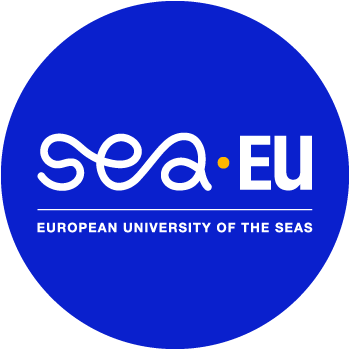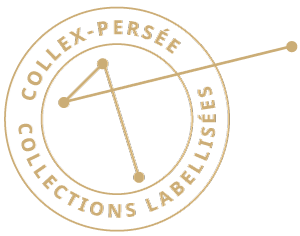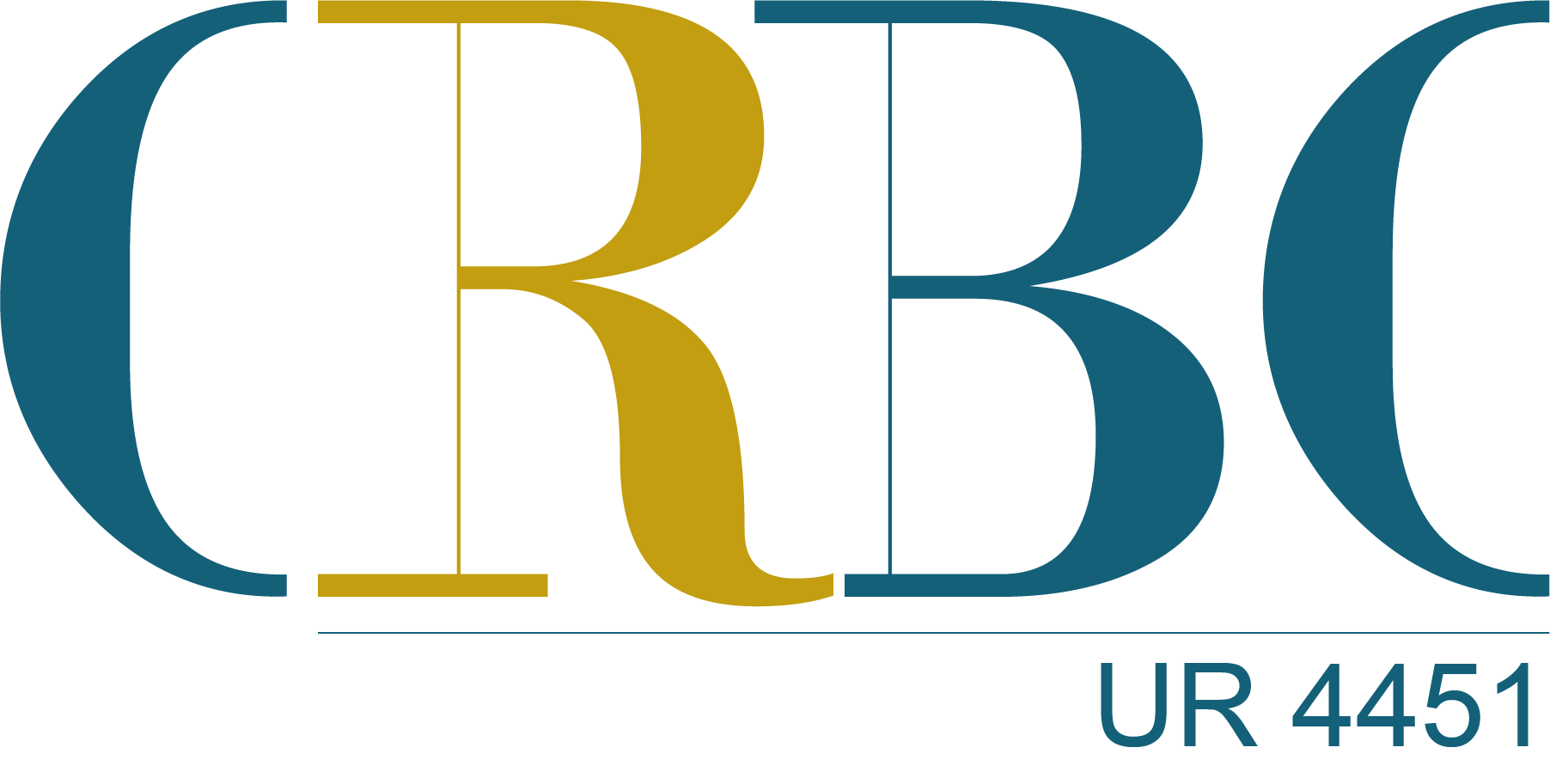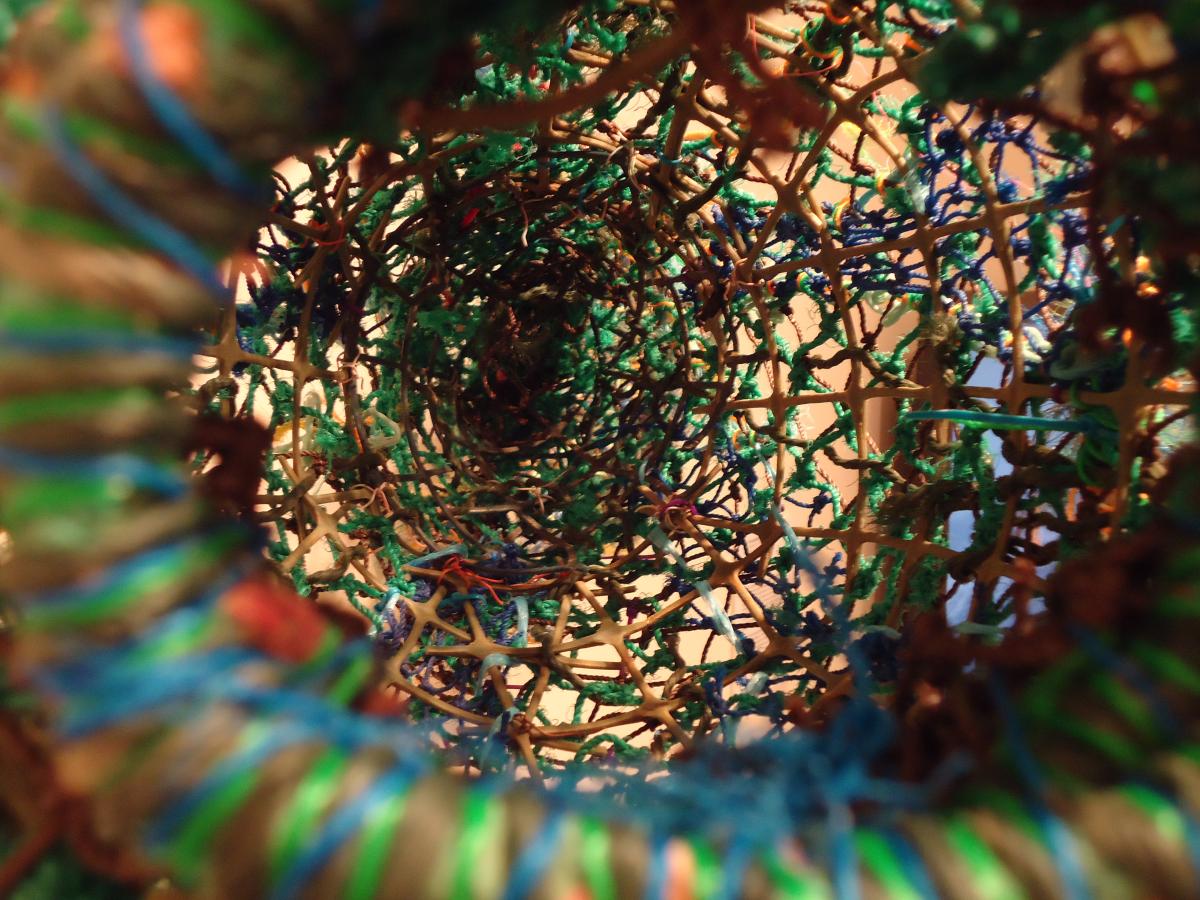
Organisée par :
- Estelle Castro-Koshy, Senior Researcher, James Cook University
- Géraldine Le Roux, , MCF, UBO/CRBC et James Cook University
- Jean-Marc Serme, MCF Études étatsuniennes, IdA-Brest et HCTI, UBO
- Laura Singeot, PRAG, université Paris Saclay, CREA Paris Nanterre
Programme complet à télécharger
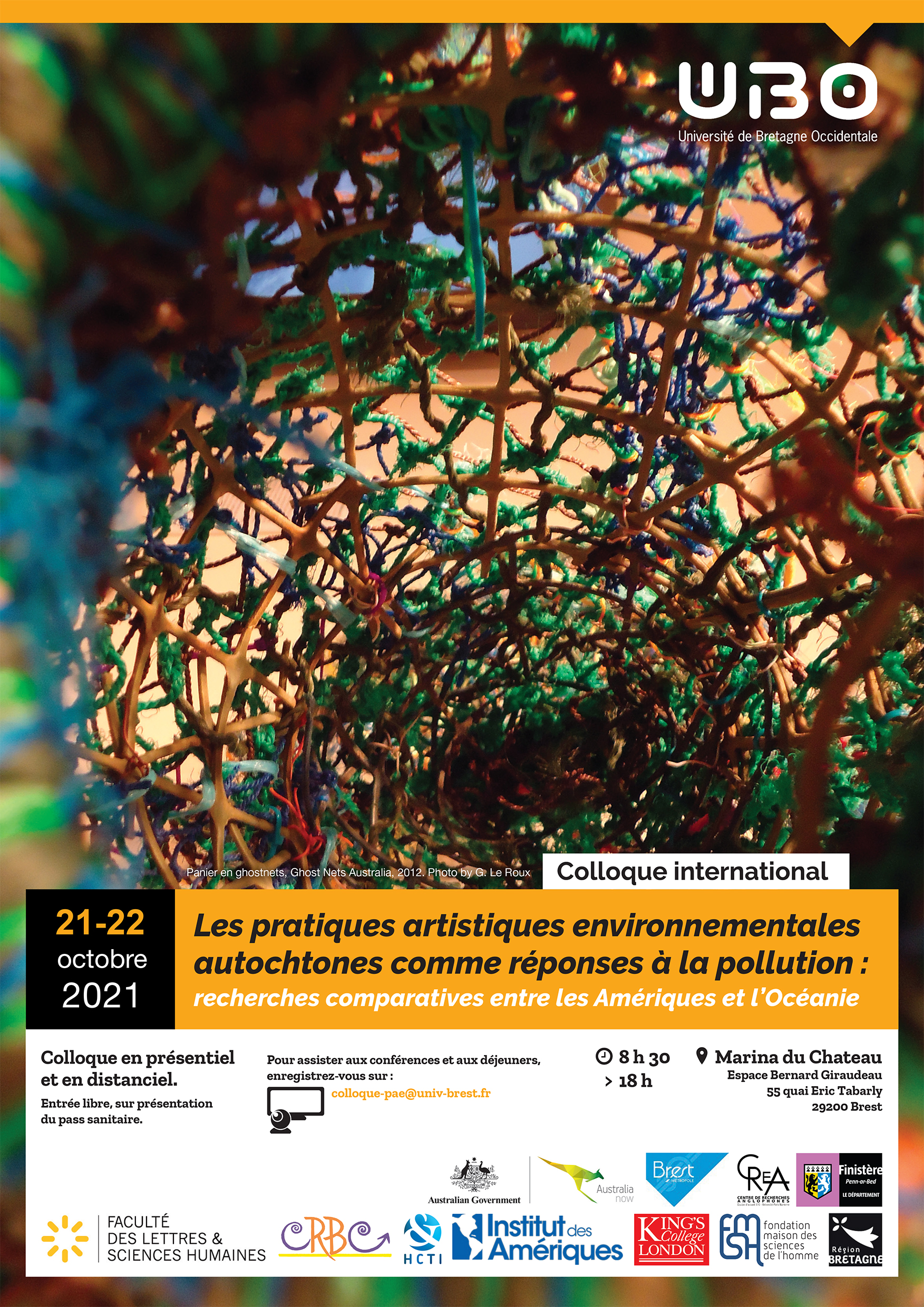
Conférences plénières
Craig Santos Perez, University of Hawaiʻi, Mānoa
Estelle Castro-Koshy, James Cook University
Le programme comprendra :
- Une conversation en ligne avec Alexis Wright sur son roman The Swan Book.
- Une rencontre avec l’écrivaine aborigène wirajduri Tara June Winch à propos de son roman The Yield / La récolte, lauréat du Miles Franklin Award.
Table-ronde "essais nucléaires en Océanie, un héritage empoisonné"
Jeudi 20 octobre, de 19h00 à 21h00 à l'UFR Lettres, salle B001.
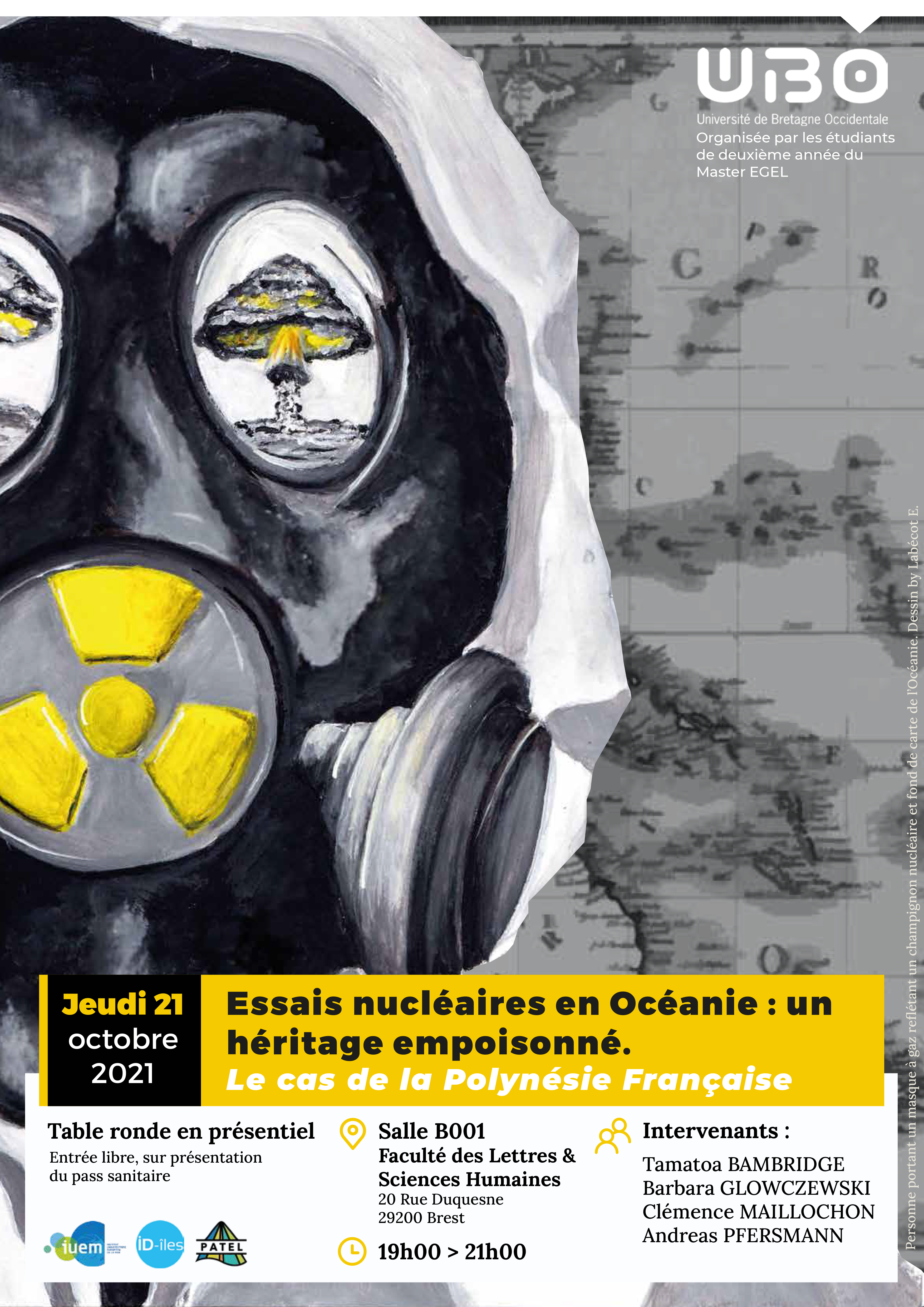
Téléchargez le programme ici.
Membres du comité scientifique
- Tamatoa Bambridge, PSL Paris University: EPHE-UPVD-CNRS, USR 3278 CRIOBE
- Sophie Gergaud, Directrice du Festival Ciné Alter’Natif
- Lionel Larré, Université Bordeaux Montaigne
- Magali McDuffie, SAE Creative Media Institute, Perth
- Ocean Mercier, Victoria University of Wellington Te Herenga Waka
- Miguel Olmos Aguilera, El Colegio de la Frontera Norte, A.C.
NB : Les interventions pourront se faire en présentiel ou virtuellement.
La conférence aura lieu en ligne si la situation sanitaire l'exige.
Le colloque international sera précédé les 19-20 octobre du colloque international dédié à l'œuvre Carpentaria d'Alexis Wright, ouvrage au programme de l'agrégation d'anglais.
Argumentaire
À travers l’analyse des pratiques artistiques autochtones ou d’artistes travaillant en étroite collaboration avec des communautés autochtones, ce colloque vise d’une part à déterminer les modalités selon lesquelles les sociétés autochtones perçoivent et interagissent avec la pollution et les substances toxiques qui affectent leurs territoires et lieux de vie. Il s’agit d’autre part d’examiner comment des réflexions sur les déchets et leur recyclage éclairent les discours sur la souveraineté autochtone, et comment la notion de souveraineté telle qu’elle est comprise, vécue et définie par les autochtones nourrit et influence des pratiques artistiques qui réagissent aux défis environnementaux contemporains.
Les sciences humaines et sociales s’intéressent de plus en plus au « déchet », également défini comme « discarded », « rebut », « reste » (Joulian, Tastevin & Furniss, 2016), informant de ce que disent nos poubelles (Rathje & Murphy, 1992) et rendant compte des processus de recyclage, qu’ils soient faits par le biais d’indépendants (Duclos, 2015), d’artistes (Laviolette, 2006) ou institutionnalisés voire industrialisés. Le recyclage des métaux et résidus toxiques et nucléaires commence également à être traité (Garcier, 2014).
Cette manifestation se propose d’être une plateforme pour articuler pollution, recyclage, art et souveraineté autochtone, en particulier dans le rapport qu’entretiennent les communautés et les artistes avec l’océan et l’eau en général. Les auteurs pourront aborder ces thèmes à partir des axes et questionnements suivants.
Traitement, perception, récupération et transformation des matériaux
Ce premier axe est consacré aux approches artistiques déployées dans ou autour d’espaces confrontés à différents types de pollution et de déchets. On pourra analyser en quels termes les artistes parlent du périple de ces déchets lorsqu’ils viennent d’ailleurs – par exemple sous l’action des courants marins, des cours d’eau ou d’actions humaines. Le déchet est-il traité comme un matériau exogène ou endogène ? Est-il perçu comme une conséquence négative de la société de consommation ou est-il pris comme une richesse à glaner au même titre que les ressources naturelles locales ? Une réponse toute en nuances est soufflée par le travail de Brian Jungen (Dunne-za, canadien et suisse) qui recrée dans les années 2000 des squelettes de baleines avec des éléments de chaises en plastique, en un geste unificateur entre le grand animal totem du Pacifique Nord-ouest et les objets usuels de la société de consommation nord-américaine. Dans quels cas y a-t-il une redéfinition du « déchet » en « matériau », ce que l’étude de Géraldine Le Roux (2016) a montré à partir du recyclage artistique des filets de pêche perdus en mer ? Cette re-définition a-t-elle un lien avec des prises de conscience de la finitude des ressources ? On se demandera comment des éléments collectés par exemple sur la plage inspirent des œuvres artistiques – qu’elles soient plastiques, visuelles, ou poétiques – qui peuvent devenir, selon les termes de Flora Aurima Devatine (2018) des « pierre|LS|s|RS| de refondation » et sous-tendre aussi bien que refléter une réflexion philosophique sur l’évolution de la société (tahitienne dans ce contexte).
Il sera possible de mettre en lumière les dimensions symboliques de ces nouveaux matériaux et, en s’intéressant aux négociations et aux conflits qui entourent leur extraction ou leur circulation, de rendre compte des valeurs données à un territoire. Nous sommes donc ouverts aux approches qui associent anthropologie des techniques et anthropologie symbolique. Des études sur les façons dont les artistes se positionnent par rapport à la pollution et aux déchets laissés par les grands projets miniers une fois que ceux-ci sont fermés (en Nouvelle-Calédonie-Kanaky ou en Australie par exemple) seraient aussi les bienvenues. Par exemple, dans le cadre d'un lieu contaminé, le réinvestissement artistique est-il revendiqué comme une forme exprimant une continuité d’occupation d’un territoire et d’une forme de souveraineté ? On pensera entre autres au photographe Will Wilson et à « l’homme diné (navajo) post-apocalyptique » (sur)vivant dans un environnement rendu « toxique » non seulement par la contamination à l’uranium, mais aussi par le colonialisme à l’œuvre maintenant depuis des siècles (Rife, 2016).
On se demandera enfin dans quelles circonstances la question des déchets – leur arrivée ou leur éventuel recyclage – amène à renouer ou créer des alliances inter-insulaires, en Océanie en particulier, ou inter-nationales, telle la coopération entre les Quinault et les Quileute afin de collecter des casiers à crabes abandonnés sur la Péninsule Olympique de l’état de Washington.
Décolonisation et souveraineté par l’action artistique et environnementale
Cet axe s’intéresse aux concepts autochtones utilisés par les artistes pour exprimer leur vision de ce que serait un « développement durable » ou du moins une relation respectueuse avec l’environnement qui entérine leur souveraineté. La compréhension de la terre comme « entité vivante » (Watson in Castro-Koshy, 2018) pourra participer ici de la définition même d’environnement. Nous souhaiterions recevoir des contributions sur la manière dont les concepts en langues autochtones inspirent et fertilisent des pratiques artistiques d’engagement avec un environnement perturbé ou menacé. Sont particulièrement attendues des communications qui entrent en dialogue ou prolongent les travaux élaborés par les chercheurs, universitaires et artistes autochtones sur les notions de souveraineté intellectuelle (Warrior, 1992), culturelle (Singer, 2001, p. 2), incarnée (embodied) (Moreton-Robinson, 2007, p. 2), visuelle (Raheja, 2011), dansée (Dangeli, 2015), narrative (Moreton, 2017), sensible (Robinson, 2017), ainsi que de souveraineté comme action (Rickard, 2017, p. 81) et comme « mode de vie » (Warrior, 1992). On pourra également se reporter au concept de « justice environnementale » définie aux États-Unis dans les années 1970-1980 (Mitchell, 2011) tel qu’il s’applique aux revendications autochtones d’égalité devant la loi ainsi qu’à leurs prérogatives politiques dans la gestion de leurs terres.
S’il est évident que les acceptions de ce qu’est la souveraineté autochtone prennent tout leur sens dans les contextes locaux desquels ils émergent, nous nous intéressons également aux apports des concepts autochtones sur le terrain philosophique et à leur circulation transnationale. Romaine Moreton, poétesse, philosophe et cinéaste aborigène goenpul jagara et bundjulung s’inspire par exemple du concept autochtone hawaïen de « ea », qui signifie à la fois « souveraineté, souffle, respiration, indépendance, vie, air, esprit, et se soulever » (Pacheco, 2005, p. 3), pour souligner que la souveraineté se situe pour les autochtones dans « la capacité de retrouver le contrôle de leur souffle et respiration » (Moreton, 2006, p. 309).
Ce colloque s’intéresse aussi à la façon dont les artistes mobilisent et réinvestissent des concepts autochtones pour appuyer des projets de blocage sur leurs territoires ou de sauvegarde et protection de leurs territoires, comme l’a mené le peuple kichwa de Sarayaku. Les « protecteurs de l’eau » ont été célébrés par des chansons telles que « Stand Up / Stand N Rock #NoDAPL », interprété par Hip Hop Caucus et Taboo, ou bien « Black Snakes » de Prolific The Rapper associé à A Tribe Called Red. Ces œuvres ont mis en musique les images de la répression violente des manifestations pacifiques organisées contre la construction du Dakota Access Pipeline sur la réserve sioux lakota de Standing Rock aux États-Unis.
Sont aussi les bienvenues des communications portant sur les réponses des artistes autochtones aux situations dans lesquelles les préoccupations et actions des écologistes vont à l’encontre des expressions et revendications de souveraineté autochtone et prennent la forme de nouvelles entreprises de dépossession des populations autochtones (Bayet-Charlton, 2003). La chasse à la baleine reconduite chaque année depuis 1999 par les Makahs de l’état de Washington fit l’objet à plusieurs reprises de blocage par des groupes opposés à ce type de pêche. Dans la mesure où l’environnement est le plus souvent compris par les autochtones dans un sens holistique, c’est-à-dire incluant les « relations socio-écologiques » (Muir, Rose, Sullivan, 2010, p. 259) que les humains ont entre eux, on pourra y compris se demander si la notion de souveraineté environnementale est pertinente.
Arts et savoirs de l’océan, de la mer et du littoral
Ce colloque s’intéresse tout particulièrement au rapport que les autochtones ont avec ces espaces singuliers que sont la mer, l’océan et le littoral. Les intervenants pourront analyser comment les pratiques artistiques élaborées face à la pollution mobilisent des conceptions proprement autochtones sur le milieu marin. Les analyses de réponses d’artistes à l’écoulement de boues toxiques qui se déversent dans les mers et les océans ou aux ressources halieutiques chargées de résidus nucléaires pourront éclairer la façon dont les peuples autochtones conçoivent l’articulation de la terre et la mer, un espace défini par les Aborigènes d’Australie comme « continu et interconnecté » (Sea Country: an Indigenous Perspective, 2002, p. 3). Dans l’état du Maine aux États-Unis, une exposition du musée Abbe, intitulée « wolankeyutomon » qui signifie « faire attention à tout » en langue mi’kmaq, définit la vision holistique des peuples autochtones marins, liant l’eau, les humains et toutes les autres créatures sur terre et dans les océans. L’articulation art/environnement/recyclage/souveraineté invite à interroger la notion de frontières entre les espaces terrestres et marins communément employées dans des contextes non-autochtones.
Ce colloque accueille des communications sur toutes les formes de pratique artistique : art plastique, visuel et transmedia, cinéma, fiction, poésie, danse, chant, théâtre, performances, etc. Les propositions pourront émaner de différentes disciplines (anthropologie, histoire, science politique, arts plastiques et visuels, linguistique, études culturelles, études environnementales, études littéraires, études sur la danse, les performances, le cinéma, la réception, discard et waste studies, etc.) et présenter des approches interdisciplinaires. Chaque continent peut être étudié séparément. Les contributions inter-continentales ou collectives seront les bienvenues.
Veuillez envoyer vos propositions de communication en français ou en anglais, ainsi qu’une courte biographie, à Estelle Castro-Koshy (estelle.castrokoshy@jcu.edu.au), Géraldine Le Roux (Geraldine.LeRoux@univ-brest.fr) et Jean-Marc Serme (jean-marc.serme@univ-brest.fr) avant le 30 avril 2021.
La notification des communications retenues sera envoyée le 31 mai 2021.
International Conference
Indigenous Environmental Artistic Practices Responding to Pollution:
Comparative Research between Oceania and the Americas
Université de Bretagne Occidentale
21-22 October 2021
Organised by Estelle Castro-Koshy, Senior Researcher, James Cook University
Géraldine Le Roux, Ass. Prof., UBO (France), James Cook University
Jean-Marc Serme, Ass. Prof. US Studies, IdA-Brest and HCTI, UBO (France)
Laura Singeot
Keynote speakers
Dr Craig Santos Perez, University of Hawaiʻi, Mānoa
Dr Estelle Castro-Koshy, James Cook University
The programme includes:
- A conversation with Indigenous Wirajduri writer Tara June Winch who will be talking about her novel The Yield/La récolte which won the Miles Franklin Award.
- An online conversation with Alexis Wright about her novel The Swan Book.
Scientific committee members
Tamatoa Bambridge, PSL Paris University: EPHE-UPVD-CNRS, USR 3278 CRIOBE
Sophie Gergaud, Director of the Cinema Festival Alter’Natif
Lionel Larré, Université Bordeaux Montaigne
Magali McDuffie, SAE Creative Media Institute, Perth
Ocean Mercier, Victoria University of Wellington Te Herenga Waka
Miguel Olmos Aguilera, El Colegio de la Frontera Norte, A.C.
Please note: Speakers can choose to participate virtually or in person.
The conference will be held virtually if needed.
On 19-20 October, an international conference on Alexis Wright's Carpentaria will also be held at the UBO.
Arguments
By analysing creative practices by Indigenous artists or artists working closely with Indigenous communities, this conference aims to determine how Indigenous societies perceive and interact with pollution and toxic substances that affect their territories or environment. It examines how conceptions of waste, and its recycling, enlightens discourses on Indigenous sovereignty. We explore in particular how the notion of sovereignty – as understood, lived, and defined by Indigenous peoples – informs and influences artistic practices that respond to contemporary environmental challenges.
Social science shows a growing interest in ‘waste’, also defined as ‘discarded materials’, ‘litter’, ‘remains’ (Joulian, Tastevin & Furniss, 2016). Studies have examined what our rubbish bins say about us (Rathje & Murphy, 1992) and what recycling processes are undertaken by individuals (Duclos, 2015), artists (Laviolette, 2006) or institutions and industries. R. J. Garcier, for example, has also analysed the recycling of metal and toxic residues (2014).
This conference aims to be a platform that articulates reflections about pollution, recycling, art, and Indigenous sovereignty. It will pay particular attention to the relationships established and nurtured by Indigenous artists and communities with the ocean and water. Papers are invited to discuss these themes in relation to the following areas of study and/or questions.
Treatment, perception, recycling, and transformation of materials
We are interested in the artistic approaches deployed in or around spaces faced with different kinds of pollution and waste. How do artists speak about the journey of waste – for example due to marine currents, rivers or human actions? Is waste treated as exogamic or endogamic material? Is waste perceived as a negative effect of consumerism in society or taken as potentially interesting material that can be valued like any local natural resources? One subtle answer may be drawn from the work of Brian Jungen (Dunne-za, Canadian and Swiss) who in the early 2000s shaped recycled plastic chairs into whale skeletons, thus establishing a powerful link between the great totem animal of the Pacific Northwest and basic North American consumer society discards. In what circumstances is ‘waste’ precisely redefined as ‘material’? Géraldine Le Roux’s study (2016), for example, has demonstrated that this redefinition took place with the recycling of ghost nets in northern Australia and the Torres Strait Islands. Is this re-definition linked to an awareness of the finite nature of resources? This conference will ask how elements collected on the beach for example inspire artistic – visual, filmic, poetic – works – and how such works can become, in Flora Aurima Devatine’s words (2018), ‘re-building blocks’ that support and reveal a philosophical approach regarding the evolution of society (Tahitian society in Aurima Devatine’s context).
Proposals are invited to highlight the symbolic dimensions of these new materials, and – through the analysis of the negotiations or conflicts that surround their extraction or circulation – to unveil the values given to a territory. We welcome approaches that link the anthropology of technics and symbolic anthropology, as well as studies about the way artists position themselves in relation to pollution and waste left behind by large mining projects (in New-Caledonia-Kanaky or in Australia for example). Participants can address cases in which the artists’ reinvestment and reclamation of a contaminated site serve to express their communities’ continuing occupation of a territory and thus a form of sovereignty. Photographer Will Wilson comes to mind with his ‘Dineh (Navajo) post-apocalyptic man’ surviving in an environment made ‘toxic’ not only by uranium contamination, but more generally by the colonialism that has been imposed in America for several centuries (Rife, 2016).
We will ask if, and under which circumstances, the arrival or potential recycling of waste leads people to renew or create inter-island alliances, in Oceania in particular, or inter-nation relationships, in Amazonia or in the Western Olympic Peninsula (Washington state, US) where the Quinault and Quileute tribes cooperate to collect abandoned crab traps.
Decolonisation and sovereignty as artistic and environmental actions
This conference looks at Indigenous concepts used by artists to express their vision of what ‘sustainable development’ or at least a respectful relationship with the environment that recognizes their sovereignty would be. Environment might be described here in relation to the understanding that land is a ‘living entity’ (Watson in Castro-Koshy, 2018). We hope to receive papers interrogating how Indigenous concepts (in Indigenous languages) inspire and nurture artistic practices of engagement with a disrupted or threatened environment. We are particularly interested in contributions that enter into dialogue with or expand works conducted by Indigenous academics, researchers, and artists on notions of intellectual (Warrior, 1992), cultural (Singer, 2001, p. 2), embodied (Moreton-Robinson, 2007, p. 2), visual (Raheja, 2011), dancing (Dangeli, 2015), storytelling (Moreton, 2017), and perceptual (Robinson, 2017) sovereignty, and of sovereignty as action (Rickard, 2017, p. 81) and as a ‘way of life’ (Warrior, 1992). ‘Environmental justice’, a concept defined in the 1970s-1980s in the USA (Mitchell, 2011), may also be explored as it is often put forward in Indigenous demands of equality before the law and in their claims for more sovereignty in Indian land management.
Even though understandings of what constitutes Indigenous sovereignty vary according to the local contexts from which it is defined, we would like to include papers that analyse what Indigenous concepts, and their transnational circulation, bring to the philosophical field. Goenpul Jagara and Bundjulung poet, philosopher, and filmmaker, Romaine Moreton, for example, was inspired by the Hawaian concept ‘ea’, which means ‘sovereignty, breath, independence, life, air spirit, to rise up’ (Pacheco, 2005, p. 3). The concept allowed her to underline ‘the possibility that Indigenous sovereignty is located in |LS|Indigenous people’s|RS| capacity to recontrol |LS|their|RS| own breaths’ (Moreton, 2006, p. 309).
This conference also looks at how artists mobilise and reinvest Indigenous concepts to contribute to the safeguarding and protection of their territories (eg. the projects established by the Kichwa people of Sarayaku) or to support the blocking of mining or construction projects on or near their lands. The ‘water protectors’ have been celebrated in songs such as ‘Stand Up / Stand N Rock #NoDAPL’, by Hip Hop Caucus and Taboo, or ‘Black Snakes’ by Prolific The Rapper in association with A Tribe Called Red. These productions have relayed images of the violent repression by the police of pacific demonstrations against the construction of the Dakota Access Pipeline near the Lakota-Dakota Indian reservation of Standing Rock in South and North Dakota (USA).
We also welcome contributions on the responses given by Indigenous artists to situations in which the concerns and actions of the greens or environmentalists go against the expression and claims of Indigenous sovereignty and further dispossess Indigenous people (Bayet-Charlton, 2003). Traditional whale hunting by the Makahs of Washington state has been taking place every year since it started again in 1999, but it was targeted several times by groups opposed to such fishing practices. Insofar as the environment is most often understood by Indigenous people in a holistic way, that is, including ‘social-ecological relationships’ (Muir, Rose, Sullivan, 2010, p. 259), we will also ask if the notion of environmental sovereignty could be useful to develop.
Arts and knowledges of the ocean, sea, and coastline
This conference aims to substantially focus on how Indigenous people relate to the sea, the ocean, and the coastline. Speakers are invited to examine how artistic practices that deal with pollution mobilise Indigenous concepts relating to the sea or ocean. Artists’ responses to either toxic mud that leaks into the oceans or to the fish stocks that are infected with nuclear residues could be analysed to highlight the way Indigenous people perceive the articulation between the land and the sea; coastal environments are, for example, for Australian Indigenous people ‘an integrated cultural landscape/seascape’ (Sea Country: an Indigenous Perspective, 2002, p. 3). In the state of Maine (USA), the Abbe museum displays an exhibition entitled ‘wolankeyutomon’ which means ‘take care of everything’ in Mi'kmaq and defines the holistic vision of maritime Indigenous peoples, connecting water, human beings, and all creatures on land and in the ocean. Looking at the articulation between the arts, the environment, recycling, and sovereignty will also lead us to question the very notion of borders between land and sea that is commonly used in non-Indigenous contexts.
This conference invites contributions addressing all forms of artistic practices, including visual arts, transmedia arts, cinema, fiction, poetry, dance, singing, theatre, performance, etc. It welcomes scholars working in the disciplines of anthropology, history, political science, literature, visual arts and films, linguistic, cultural studies, environmental studies, dance studies, performances, cinema, reception, discard and waste studies, etc., and using interdisciplinary approaches. Studies on all cultural areas, past or present, are welcome. Papers can focus on Oceania or the Americas, or offer intercontinental analysis. Collective contributions are most welcome.
Please send your abstracts (250-300 word) in English or French, along with a short biography, to Estelle Castro-Koshy (estelle.castrokoshy@jcu.edu.au), Géraldine Le Roux (Geraldine.LeRoux@univ-brest.fr) and Jean-Marc Serme (jean-marc.serme@univ-brest.fr) by 30 April 2021.
Notification of acceptance will be sent by 31 May 2021.
Bibliography
Sea Country: an Indigenous Perspective: The South-east Regional Marine Plan Assessment Reports, |LS|2002|RS|, Hobart, National Oceans Office, 196 p.
Aurima Devatine F. |LS|2020|RS|, « Brassées de bris : essai poético-photographique », in eTropic 19 (1): Environmental Aristic Practices and Indigeneity: In(ter)ventions, Recycling, Sovereignty, Castro-Koshy E., Le Roux G. (dir).
Bayet-Charlton, F. |LS|2003|RS| « Overturning the Doctrine; Indigenous People and Wilderness – being Aboriginal in the Environment Movement », in Grossman M. (dir.), Blacklines: Contemporary Critical Writing by Indigenous Australians, Carlton, Melbourne University Press, p. 171-180.
Castro-Koshy E. |LS|2018|RS|, « An Interview with Sam Watson », AustLit : https://www.austlit.edu.au/InterviewSamWatson
Dangeli M. |LS|2015|RS|, « Dancing Sovereignty and First Nations Protocols », https://www.youtube.com/watch?v=iXXeegrjwfo
Duclos M. |LS|2015|RS|, Horizons d’égalité. Le combat des biffins parisiens, Paris Sorbonne, thèse de doctorat.
Garcier R. J. |LS|2014|RS|, « Disperser, confiner ou recycler ? Droit, modes de gestion et circulations spatiales des déchets faiblement radioactifs en France », L’Espace géographique, Belin, 43 (3), p. 265-283.
Goldfarb B., « What indigenous communities are teaching scientists about nature », Vox,
5 juin 2016, https://www.vox.com/2016/6/5/11852762/native-indigenous-science-environment
Joulian F. Tastevin & P. Furniss J. |LS|2016|RS|, « "Réparer le monde" : une introduction », Techniques & Culture, p. 65-66 : http://journals.openedition.org/tc/7772
Laviolette P. |LS|2006|RS|. « Ships of Relations: Navigating Through Local Cornish Maritime Art», International Journal of Heritage Studies, 12 (1), p. 69-92.
Le Roux G. |LS|2016|RS|, « Transforming Representations of Marine Pollution. For a New Understanding of the Artistic Qualities and Social Values of Ghost Nets », in Visual Creativity and Narrative Research in and on Oceania, Castro-Koshy E., Le Roux G. (dir), Anthrovision, 4 (1): http://journals.openedition.org/anthrovision/2221.
Mitchell G. |LS|2011|RS|, « Environmental Justice: An Overview », Encyclopedia of Environmental Health, Elsevier Science, p. 449-458,
https://www.sciencedirect.com/science/article/pii/B9780124095489112278
Moreton R. |LS|2006|RS|, The Right to Dream, thèse de doctorat, University of Western Sydney.
Moreton R. |LS|2017|RS|, « Creative Industries Indigenous Seminar Series – Dr Lou Bennett and Dr Romaine Moreton », https://nowalls.qut.edu.au/sovereign-storytelling/
Moreton-Robinson A. |LS|2007|RS|, « Introduction », in Moreton-Robinson A. (dir.), Sovereign Subjects, Crows Nest, Allen & Unwin, 256 p.
Muir C., Rose D., Sullivan P. |LS|2010|RS| « From the Other Side of the Knowledge Frontier: Indigenous Knowledge, Social-ecological Relationships and New Perspectives », The Rangeland Journal, 32, p. 259-265.
Pacheco A. |LS|2005|RS|, Past, Present, and Politics: a Look at the Native Hawaiian Sovereignty Movement, https://digital.lib.washington.edu/researchworks/bitstream/handle/1773/2262/Amanda%20Pacheco.pdf?sequence=1&isAllowed=y
Raheja, M/ H. |LS|2011|RS|, Reservation Reelism: Redfacing, Visual Sovereignty, and Representations of Native Americans in Film, Lincoln and London, University of Nebraska Press, 360 p.
Rathje W. & Cullen M. |LS|1992|RS|, Rubbish!: the Archaeology of Garbage, New York, Harper Collins Publishers, 272 p.
Rife M., « Will Wilson and Jetsonorama: Confronting Resource Extraction in the Navajo Nation », Seismopolite, 1er juin 2016, http://www.seismopolite.com/will-wilson-jetsonorama-confronting-resource-extraction-in-navajo-nation
Singer, B. R. |LS|2001|RS|, Wiping the War Paint off the Lens: Native American Film and Video, University of Minnesota Press, 128p.
Rickard J. |LS|2017|RS|, « Diversifying Sovereignty in the Reception of Indigenous Art », in Art Journal, 76:2, p. 81-84.
Robinson, D. |LS|2017|RS|, « Public Writing, Sovereign Reading: Indigenous Language Art in Public Space », in Art Journal, 76:2, p. 85-99.
Warrior, R. A. |LS|1992|RS|, « Intellectual Sovereignty and The Struggle for An American Indian Future. Chapter 3 of Tribal Secrets: Vine Deloria, John Joseph Mathews, and the Recovery of American Indian Intellectual Traditions », in Wicazo Sa Review, 8:1 (Printemps, 1992), p. 1-20.

